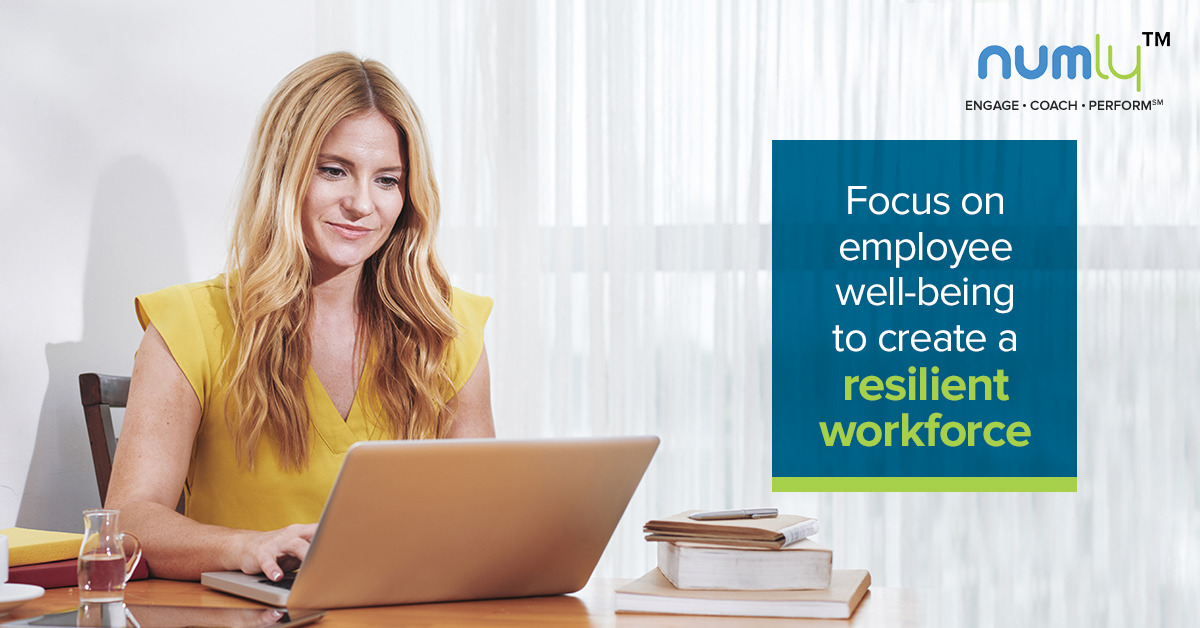Organizational success is bound to employee well-being. The past couple of years have more than proved this statement right. The WHO’s health definition aptly puts ‘well-being’ as “A state of complete physical, mental and social well-being and not merely the absence of disease”.
Is it necessary for employers to be concerned about employees?
The answer is yes! Only a ‘well’ workforce can be motivated and productive, especially in a persisting pandemic situation. As for prospective job seekers, priorities are changing and employers that can meet well-being needs will become employers of choice. Enterprise leaders across industries who have acknowledged this need have started providing various employee assistance programs like counseling services and mental health assessments.
The definition of employee well-being in today’s workplace is the mental, emotional, and physical state of the employee induced by stress factors like uncertainty, expectation, productivity, and work-life balance. A constantly evolving work and home environment, a future with remote working or hybrid workspaces, and health concerns are additionally taking a toll on employee well-being.
How can an organization mitigate this threat to employee well-being?
The success lies in the genuine participation of both employers and employees in workplace well-being initiatives and self-improvement.
The primary concern with employee wellbeing begins with issues that arise at work from home (WFH).
Stress triggers from (WFH)
Employees are constantly juggling the crystal balls of work and home without an option to put down either. The problems appear endless, creating physical and emotional stress. So here are some recommendations –
For Employees: When you are working, wherever that is, you have to be at work, ensure you have a corner at home with your back literally to the wall to withdraw to work. Eliminate distractions and intrusions. Whiteboards move home now, with schedules and planned activities, including breaks for everyone. Take help, personal or professional when necessary. Communicate with your team about time schedules for meetings.
For Employers: Create an environment of empathy and listening along the management hierarchy. Work and life have been tough for everyone in these uncertain times, kindness is free and easy to implement.
- Create an environment of trust where employees can open up with their problems.
- Design Employee Assistance Programs with inputs from employees. Reach out with solutions that work for both organization and employees.
- Enable support group helpline, for employees in need.
- Encourage social connections or employee friendships preventing social isolation. Having friends you know online is a better option than none at all.
- Implement flexible working hours, move work scheduling and responsibility into the hands of the employees to achieve their goals during remote working.
Employees returning to work from maternity leave
Employees – Before going on leave and returning from maternity leave, know your rights and study company policies for rejoining. Be open to upskill or learn something new. Take help from support communities, family, and friends.
Employers – Do accommodate parental and sick leaves or sabbaticals for employees returning from maternity. Introduce internal career counseling, and peer coaching to motivate and reorient them as they return to projects and teams.
Challenges of Mental and Emotional issues
Mental ill-health alters thinking, behavior, and emotions, affecting social and psychological behavior. The ability to maintain relationships or handle stress is compromised, leading to an overall lack of energy, severe mood swings, excessive or reduced sleeping, and eating. Emotional well-being is a projection of the state of mental health. It is having an awareness of your emotions and an ability to deal with them accordingly.
Employees – Excessive WFH stress accompanied by pre-existing unidentified conditions can be triggers for mental issues. Be proactive, take an assessment test, and protect yourself from going into a downward spiral! A recent survey said 55.3% of professionals said their organization offered employees access to Employee Assistance Programs. Be informed and participative!
Employers –
- Encourage open discussion, to destigmatize and normalize mental and emotional health.
- Do not stop at providing mental assessment tests only. Enable support group programs, inclusive of medical help for affected employees.
- Create employee awareness about company policies and resources on the same.
Work-from-Home Burnout
Burnout is a non-medical condition causing a state of physical or emotional exhaustion involving loss of identity and feeling of under accomplishment. Burnout is not related to excess working time but impaired social functioning due to:
- Health problems like distress, depression, anxiety, and psychosomatic issues
- Job demands, lack of resources, support from co-workers or supervisors, and lack of job control
- Negative work outcomes like job dissatisfaction and low organizational commitment
Employees – Identify the root cause of your burnout and start addressing it today! Convey your concerns to your supervisors and seek help from co-workers. Build exercise and sleep into your daily regime.
Employers –
- Create a culture of empowerment with support, not command and control.
- Train functional managers to recognize habits in themselves that are creating burnout in teams.
- Collaboration of employees through Peer coaching is a solution to burnout, countering the feeling of lack of support among employees.
The Manager in today’s online workplace is critical for employee wellbeing and should ensure:
- Communication and coordination within and outside teams with regular scheduling and monitoring through available mediums.
- Supervise and direct through scheduled weekly calls, discussing work progress and challenges, giving feedback and support.
- Communicate with clarity on Key Performance Indicators to everyone in the team, eliminating uncertainty and defining success for the team.
- Implement Peer coaching as a tool for collaboration and inclusivity in teams.
- Motivate, synergize, and connect the team through fun or casual collaborative activities online.
The ideal way forward in this evolving workplace would be for enterprise heads to work with HR leaders on creating frameworks for support, inclusion, stress management, and collaboration.
The organization’s human capital is its best asset; being concerned for its well-being is an investment into the future of success! Act on it today!

